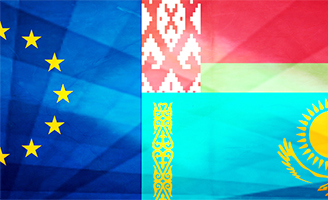Poisk-2016: CSTO stages intelligence and reconnaissance exercise
By Roger N. McDermott
May 31st, 2016, The CACI Analyst
Russia’s Armed Forces are conducting a series of exercises in Central Asia ostensibly designed to reassure regional allies that Moscow will assist in the face of an insurgency or incursion led by the Taliban or the terrorist organization calling itself the Islamic State (ISIS). However, these exercises are increasingly demonstrating the Kremlin’s intention to reassert Russia’s security role in Central Asia, while some features of such military exercises are also betraying increasingly sophisticated Russian technology and warfare capabilities, and consequently a widening gap with the country’s allies in the Collective Security Treaty Organization (CSTO).
Nagorno-Karabakh confrontation highlights Russia's clout over warring parties
By Armen Grigoryan
April 15th, 2016, The CACI Analyst
Tensions along the line of contact in Nagorno-Karabakh between April 2 and 5 resulted in the heaviest exchanges of fire since 1994. Even though the use of some types of weapons was quite unexpected, the general logic of developments in the conflict in recent years has made the recent fighting rather predictable. Concerning further hostilities, the question is not if, but when they will happen. While this danger needs to be addressed by means of international mediation, so far only Russia demonstrates substantial activity in this regard. Russia’s unilateral involvement will pursue its own particular regional interests rather than producing a lasting solution to the conflict.
Economic models of Eurasianism and the Eurasian Union: why the future is not optimistic
By Vladimer Papava
October 29, 2015, The CACI Analyst
A new Russia-Kazakhstan regional project, named the Eurasian Economic Union (EAEU), was launched in 2015. Specifically, as of January 1, 2015, integrated economic processes among Belarus, Kazakhstan and Russia are governed by the EAEU Treaty. As of January 2, Armenia joined the EAEU and as of May 21, Kyrgyzstan also became a member. In 2011, after the President of Russia declared the establishment of the Eurasian Union, some politicians and experts perceived it as a final victory of Eurasianism ideology in Russia. Under such circumstances, there is a need to analyze the economic models of Eurasianism and the Eurasian Union for a better understanding of their future.
CACI Analyst, May 27, 2015
Contents
Analytical Articles
THE SOUTHERN ENERGY CORRIDOR: A STRATEGIC PRIORITY FOR THE U.S.?, by Mamuka Tsereteli
ELECTION YEAR IN THE EURASIAN UNION AND THE EU'S EXTERNAL ACTION POLICIES, by Gaël Chataignère
MOSCOW STEPS UP PRESSURE ON CHECHNYA'S POWERFUL RULER, by Valeriy Dzutsev
THE CHALLENGES TO GEORGIA'S ENERGY SECTOR, by Ariela Shapiro
Field Reports
INGUSHETIA'S LEADER CLAIMS THE END OF INSURGENCY IN HIS REPUBLIC, by Huseyn Aliyev
GEORGIA FAILS TO OBTAIN VISA-FREE REGIME AT EaP RIGA SUMMIT, by Eka Janashia
ARMENIA'S AND GEORGIA'S PRIME MINISTERS IRON OUT RECENT STRAINS IN BILATERAL RELATIONS, byErik Davtyan
PARTY RESTRUCTURING IN KYRGYZSTAN PRIOR TO 2015 ELECTIONS, by Arslan Sabyrbekov
Election Year in the Eurasian Union and the EU's External Action Policies
By Gaël Chataignère (05/27/2015 issue of the CACI Analyst)
EU policies toward the two junior members of the Eurasian Union are an indication of the EU’s struggle to balance its normative, geo-economic, and political interests in the former Soviet space. This April, Nursultan Nazarbayev secured a fifth term in office with a full 97.7 percent of the vote, prompting only a mild response from the EU. The European External Action Service simply reiterated the conclusions of the OSCE observation mission, and the importance of the EU’s partnership with Kazakhstan. Meanwhile, despite an ongoing diplomatic thaw, Belarus remains subjected to a comprehensive set of EU sanctions. This seeming paradox questions the consistency and priorities of the EU, just a few months before Belarus holds its own presidential election.







